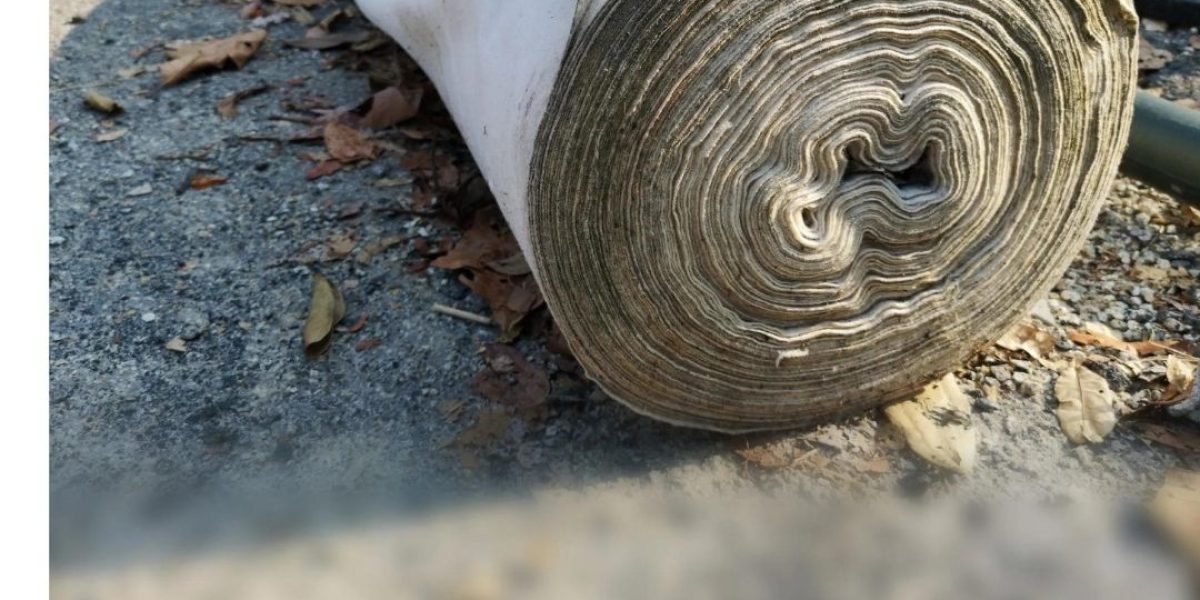Geotextile fabric is a versatile and essential component in modern civil engineering and construction projects. These permeable fabrics, primarily made from synthetic materials like polypropylene and polyester, serve multiple functions such as separation, filtration, reinforcement, protection, and drainage. This article delves into the characteristics, applications, and significance of geotextile fabrics, with a focus on the market in India.
What is Geotextile Fabric?
Geotextile fabric is categorized into two primary types: woven and non-woven. Woven geotextiles are created by intertwining yarns or fibers at right angles, resulting in a strong and durable material suitable for various applications. Non-woven geotextiles, on the other hand, are formed by bonding fibers together through mechanical, thermal, or chemical processes, creating a felt-like texture. Both types have unique properties that make them suitable for specific functions in construction and environmental engineering23.
Key Properties of Geotextile Fabric
- Permeability: Geotextiles allow water to flow through while retaining soil particles, making them ideal for drainage applications.
- Strength: The tensile strength of geotextiles provides reinforcement to soil structures, preventing erosion and instability.
- Durability: Made from synthetic materials, geotextiles are resistant to biological degradation and can withstand harsh environmental conditions.
Applications of Geotextile Fabric
Geotextile fabrics find extensive use in various sectors due to their multifunctional capabilities:
1. Civil Engineering
In civil engineering projects, geotextiles play a crucial role in road construction, railway embankments, and foundation stabilization. They help separate different soil layers to prevent mixing and maintain structural integrity. For instance, when constructing roads over soft subsoil, geotextiles can be placed beneath the surface layer to enhance load distribution and prevent deformation45.
2. Erosion Control
Geotextiles are widely used for erosion control in coastal areas and riverbanks. They provide a protective layer that prevents soil erosion caused by water flow or wave action. Additionally, they can be used in combination with vegetation to promote natural stabilization of slopes6.
3. Drainage Systems
In drainage applications, geotextiles facilitate the movement of water while filtering out sediment. They are commonly used in landfills to manage leachate and prevent contamination of groundwater. Moreover, they are essential in constructing drainage layers beneath roads and buildings34.
4. Land Reclamation
Geotextiles are instrumental in land reclamation projects where they are used to stabilize newly created land areas. By providing structural support and preventing soil erosion during the establishment of vegetation, they contribute significantly to successful reclamation efforts56.
Geo Fabric Manufacturers in India
India has seen significant growth in the production and use of geotextile fabrics due to increasing infrastructure development and awareness of environmental sustainability. Numerous Geo fabric manufacturers in India specialize in producing high-quality geotextiles tailored for various applications.
These manufacturers focus on innovation and quality control to meet international standards while catering to local market needs. The availability of advanced manufacturing technologies has enabled them to produce both woven and non-woven geotextiles that meet diverse engineering requirements.
Geo Fabric Sheet in India
The demand for geo fabric sheets in India has surged as more construction projects recognize the benefits of using geotextiles. Geo fabric sheet in India These sheets are available in various sizes and thicknesses to suit different applications—from road construction to landscaping.
Geo fabric sheets provide an effective solution for soil stabilization and drainage management, making them an essential material for contractors and engineers across the country.
Geo Sheet Manufacturers India
Several prominent geo sheet manufacturers in India have emerged as leaders in this sector. Geo sheet manufacturers india They offer a wide range of products designed for specific applications such as filtration, separation, and reinforcement.
These manufacturers emphasize sustainable practices by utilizing recyclable materials and reducing waste during production processes. Their commitment to quality ensures that the geo sheets produced meet the rigorous demands of modern engineering projects.
Conclusion
Geotextile fabric is an indispensable material in contemporary construction practices due to its versatility and functionality. From civil engineering projects to environmental protection efforts, geotextiles play a vital role in enhancing soil stability and managing drainage effectively.
With the growing number of geo fabric manufacturers in India producing high-quality geo fabric sheets tailored for various applications, the future looks promising for this industry as it continues to evolve with technological advancements.
FAQs
What are the main functions of geotextile fabric?
Geotextile fabric serves five primary functions: separation of soil layers, filtration of liquids, reinforcement of structures, protection against erosion, and drainage management.
How is geotextile fabric installed?
Installation typically involves placing the geotextile fabric at designated locations within the soil structure or on surfaces requiring stabilization or drainage support. Proper alignment and securing methods are crucial for optimal performance.
What factors should be considered when choosing a geotextile fabric?
Key factors include the type of application (e.g., drainage vs. reinforcement), soil characteristics (e.g., particle size), environmental conditions (e.g., UV exposure), and required durability based on project specifications.












